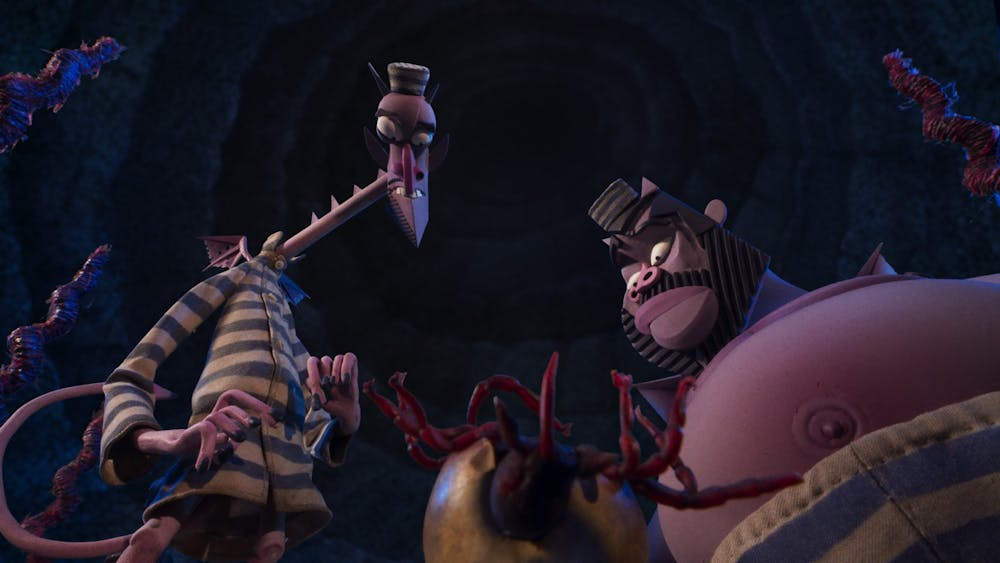The debate over whether animation is a true artistic medium and whether it’s only for kids is more alive than ever. During awards season, animated films are oftentimes only recognized in animation-specific categories. Very rarely do they compete against their live-action counterparts in categories that celebrate acting, writing, editing and directing.
Recently, this issue was heightened because Disney CEO Bob Chapek gave a statement regarding his thoughts on animation. At Wall Street Journal’s Tech Live conference, he claimed that parents and adults want content specifically made for them. He insinuates that animation’s primary market is children, and adults are more interested in prestige shows and films.
This belief is ignorant for many reasons, but the main issue lies in the notion that animation is inherently childish. Animation isn’t a genre — it's a medium, just like painting or sculpting. Any stories can be presented through animation, not just juvenile ones.
“Wendell & Wild,” the new film from stop-motion pioneer Henry Selick, proves animation can be a beautiful vessel for exploring complex themes and issues.
Related: [COLUMN: ‘Triangle of Sadness’ is an ambitious satire finding an easy target in the mega-rich]
The film follows 13-year-old Kat, who’s sent to a Catholic school in her deserted hometown. She feels immense guilt because she thinks she caused the death of her parents five years ago. This guilt manifests itself in her personal demons — Wendell and Wild — voiced by beloved comedy duo Keegan-Michael Key and Jordan Peele.
Wendell and Wild decide to trick Kat into summoning them to the Land of the Living, but they soon realize they’re in for more than they bargained. Kat finds unlikely allies in Sister Helly, a teacher at the school, and Raúl, a classmate of hers.
The film is messier than Selick’s previous work — “The Nightmare Before Christmas” and “Coraline” — as it becomes plot heavy and dense in its second and third acts. But the whimsical charm familiar in his work is ever-present, especially due to grounded themes found in the film’s core.
Grief and guilt are the major ideas being explored, but “Wendell & Wild” also takes an unexpected jab at corrupt private prisons. The main antagonists of the film, Lane and Irmgard, own Klaxon Korp, a private prison company that has taken over Kat’s hometown and pushed the citizens out so they can expand their enterprise.
It’s also no coincidence the duo of bumbling British villains seem to have been modeled after corrupt government leaders. Lane Klaxon, sporting a red tie and yellow toupee, closely resembles Boris Johnson and Donald Trump.
Related: ['The Lucky Star' cast shines bright in humorous tale of superstition]
Overall, capitalistic greed is the real enemy in “Wendell & Wild,” not a pair of demon brothers who raise deceased town citizens from the dead with magical hair cream.
“Wendell & Wild” is one of the only stop-motion animated films to receive a PG-13 rating by the Motion Picture Association. This rating gave Selick and his team more creative freedom to explore darker ideas. The soundtrack is full of punk-rock music from bands like X-Rey Spex, The Specials and Fishbone — something that wouldn’t have been possible if not for the rating.
It’s important to note that “Wendell & Wild” is not a Disney film. Like Guillermo Del Toro’s upcoming stop-motion adaptation of “Pinocchio,” which has also been heralded as boundary-pushing, the film was distributed by Netflix. Perhaps Disney and Bob Chapek could learn a thing or two from Selick, who understands that audiences enjoy diverse types of animated films that aren’t afraid to branch out into uncharted territory.
Support the Indiana Daily Student to beat Purdue's student newspaper, the Exponent, through making a donation to the IDS Legacy Fund! Whichever publication raises more money before the Purdue v. IU football game Nov. 26 "wins" the challenge, but all donations go to support student journalism at the respective publications. To help IU beat Purdue and support the IDS, follow this link to donate.




